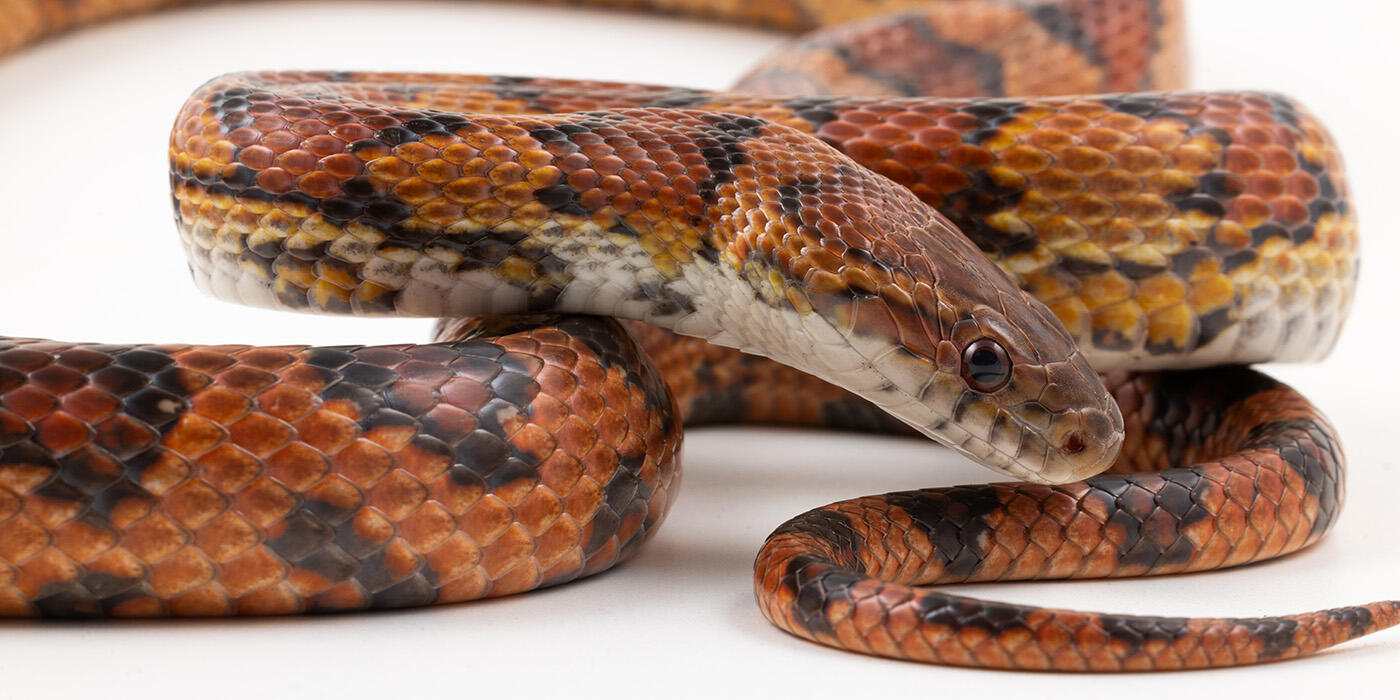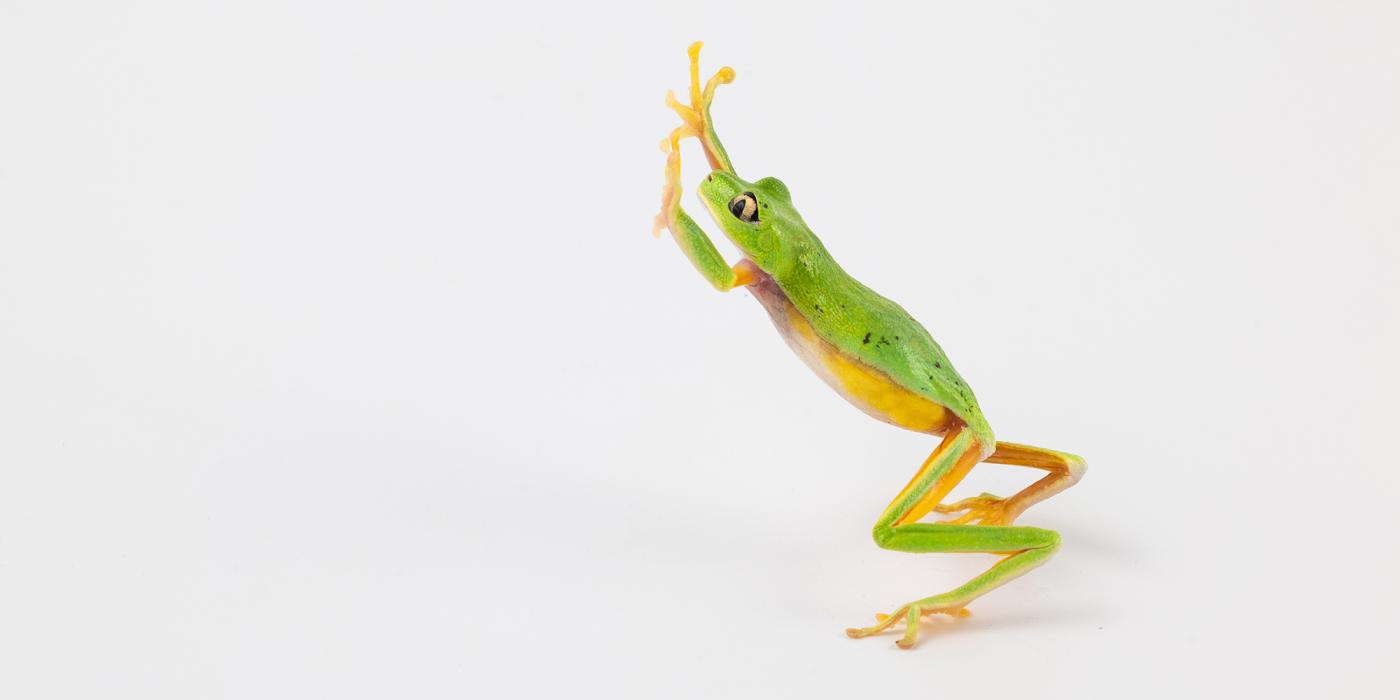Do Snakes Have Ears? And Other Sensational Serpent Questions
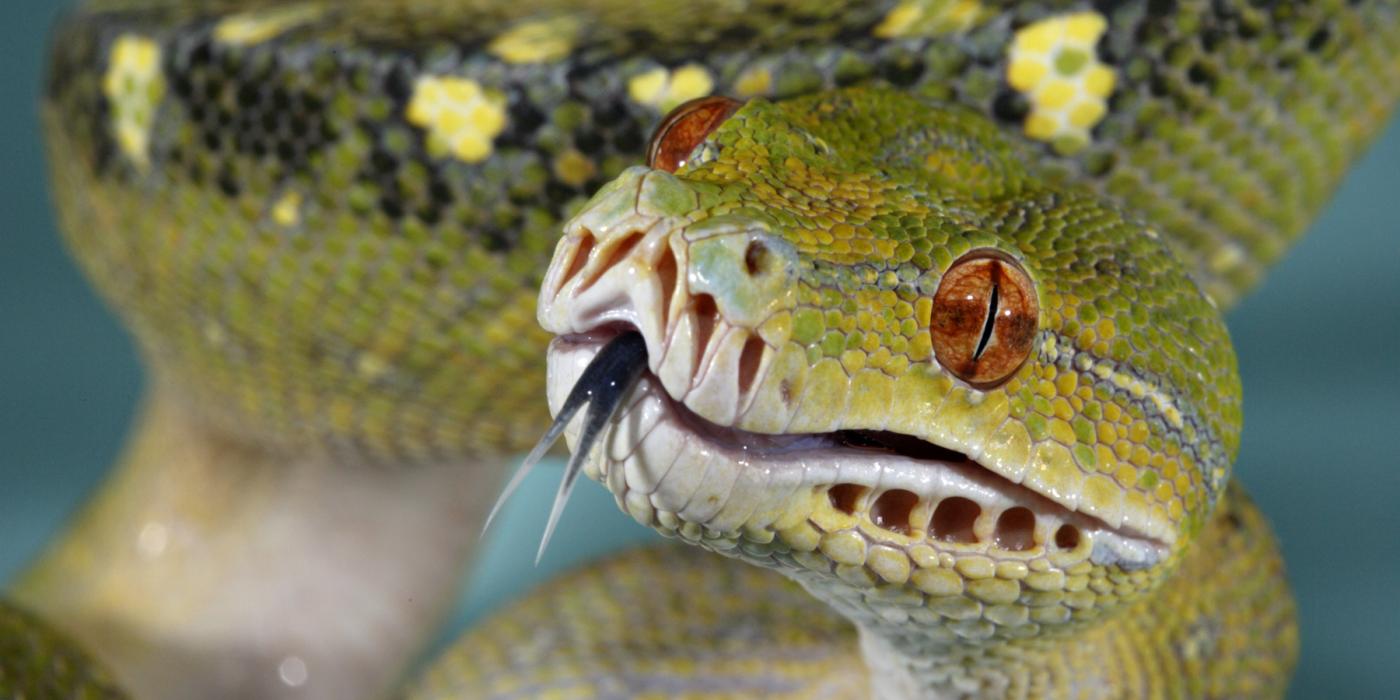
Do snakes have ears? How well can they see? How do scales help them slither? Get the scoop on your friend, the snake, from Reptile Discovery Center keeper Robin Saunders!
Do you have a favorite species of snake?
I do! I love working with green tree pythons. For starters, they’re just beautiful. Their colors are so vibrant—and, it’s always a surprise what color they are going to be. Despite the “green” in their name, they could be red, yellow, green, blue, yellow, black or white! It all depends on their age and hormones. Even once they reach the “green” stage, their colors continue to change throughout their lifetime.

The rhinoceros snake gets its name from the scaly "horn" on the tip of its snout.
What’s one of your favorite fact about snakes?
A fun fact about snakes is that they cannot blink because they do not have eyelids! Instead, they have a spectacle, or “eye cap,” for protection. Before snakes shed, two fresh lenses grow into place. Then, the old spectacles are shed along with the rest of their skin.
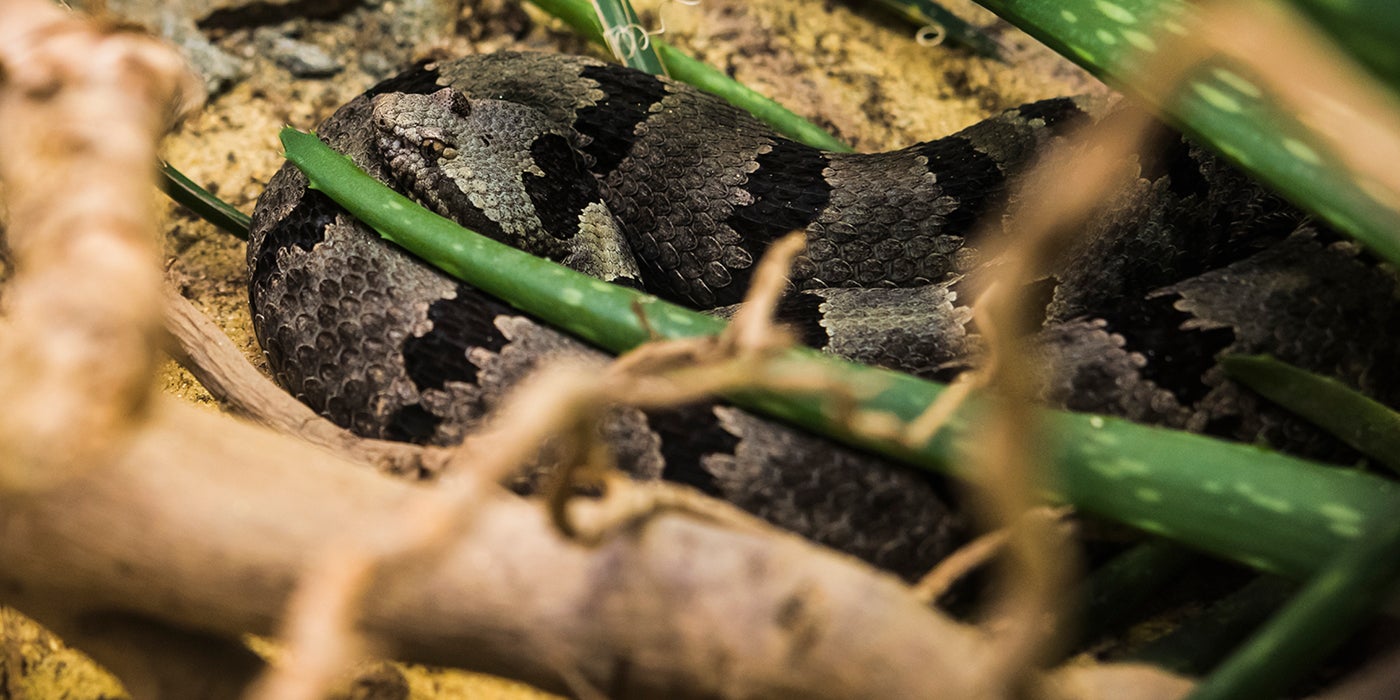
Why and how do they shed their skin?
Snakes’ skin is comprised of interlocking scales—an armor that protects them from hazards in their environment, such as sharp thorns and rough terrain. They are made out of keratin—the same material as our hair and fingernails.
Snakes shed their skin for a number of reasons: young snakes shed to grow; injured snakes shed to heal and adult snakes shed as they go through hormonal changes—like when they’re ready to mate, lay eggs or give birth.
The process of shedding can take several weeks to accomplish. When a snake prepares to shed, a layer of fluid develops between the old and new skin, keeping it pliable and stretchy. As long as the animal is in good health, there are no tears in its skin, and the temperature and humidity conditions are ideal, its skin should shed in one piece. Of course, it doesn’t always happen that way. Sometimes, a snake’s skin may peel and flake off in pieces—just like when we have a sunburn.
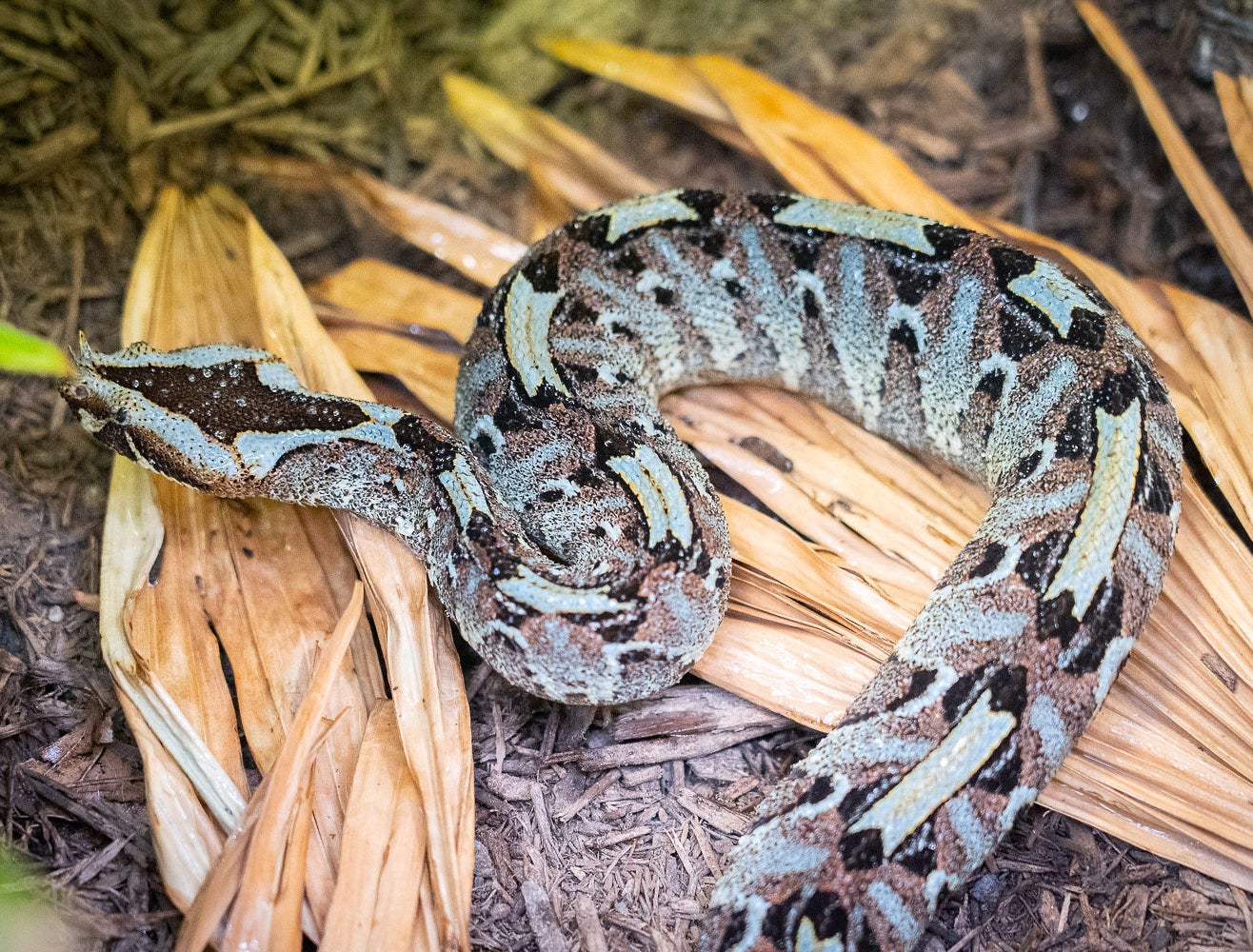
Do snakes have ears? How do they hear?
Snakes do not have an external ear, but they do have all the parts of the inner ear that we do. Their stapes—called a “columella”—is slightly different from ours in that it connects to the jawbone, enabling them to sense vibrations. However, they can only hear a portion of the sounds we hear. Snakes can detect vibrations between 50 and 1,000 Hertz, whereas humans can hear between 20 and 20,000 Hertz.

How do snakes smell?
Snakes use their tongue to collect chemical information, then touch it to the Jacobson’s organ (sensory cells) in their mouth to “smell” any food that might be nearby. They can also smell through their nares, to some extent.
When snakes shed, the fluid that helps lubricate their skin also contains hormones. If a male comes across a female’s shed, he will use his tongue and Jacobson’s organ to pick up her chemical cues. Translation: she’s ready to mate!
In addition to “tasting” chemicals with their tongue, many pit vipers, pythons and boas also have a heat pit—one of the most sensitive sensory organs in any animal. It can pick up a change in temperature of 0.001 degrees Celsius! The heat pit gives the snake a complete infrared picture of what is going on in its world—where prey is, what the hottest part of the prey is and where to strike.
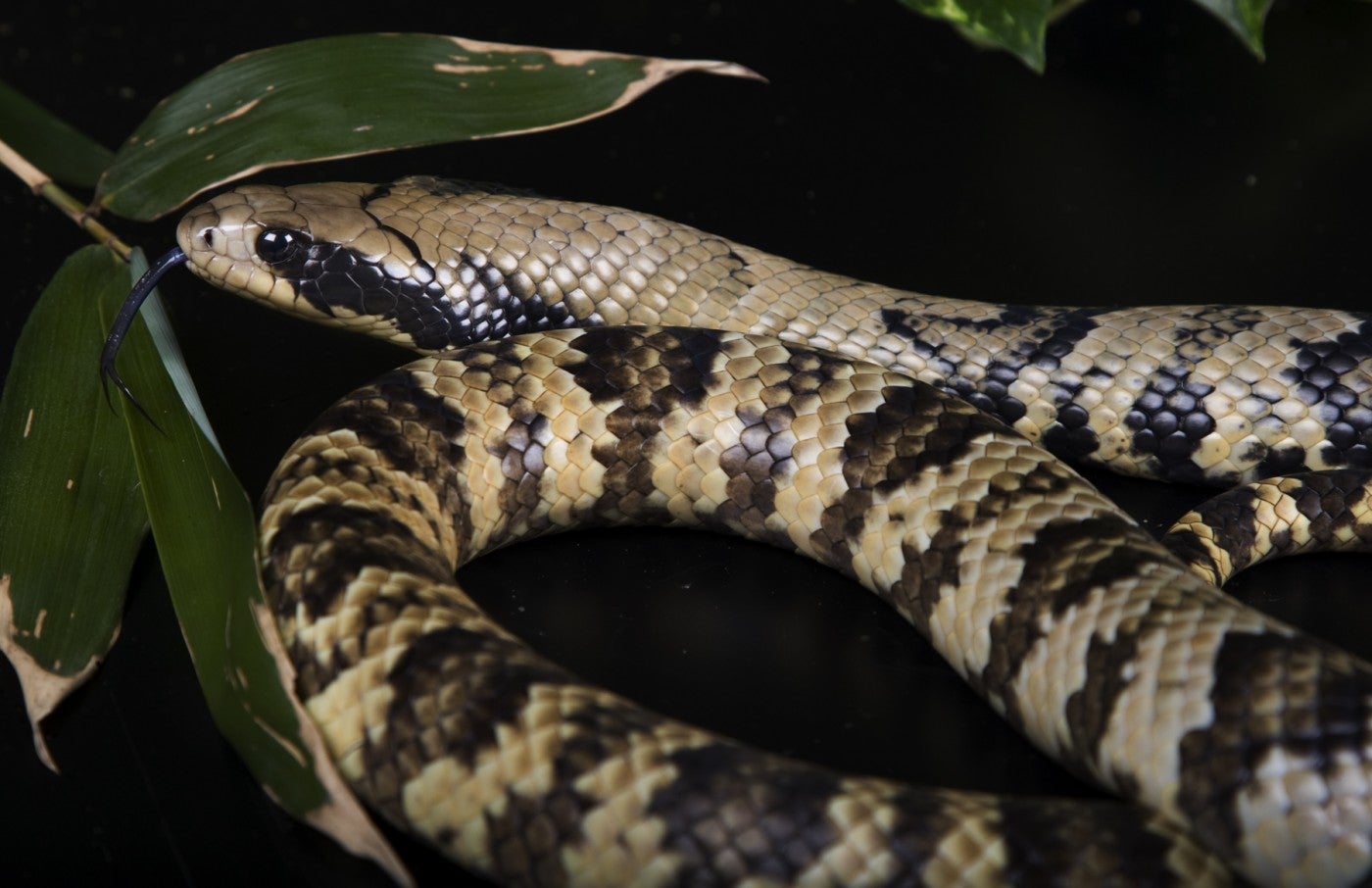
How well can snakes see?
Snakes have cones and rods in their eyes that enable them to see in two-dimensional color: blue and green. How well a snake can see depends on what species it is, where it lives in its natural habitat, and if it is on alert.
For example, snakes that hunt during the day—like false water cobras—have great eyesight. Those who live mainly underground—like pine snakes—rely more on their other senses to explore their environment. Recent studies suggest that, if snakes feel threatened, they can constrict the blood vessels in their eyes to get slightly better vision.
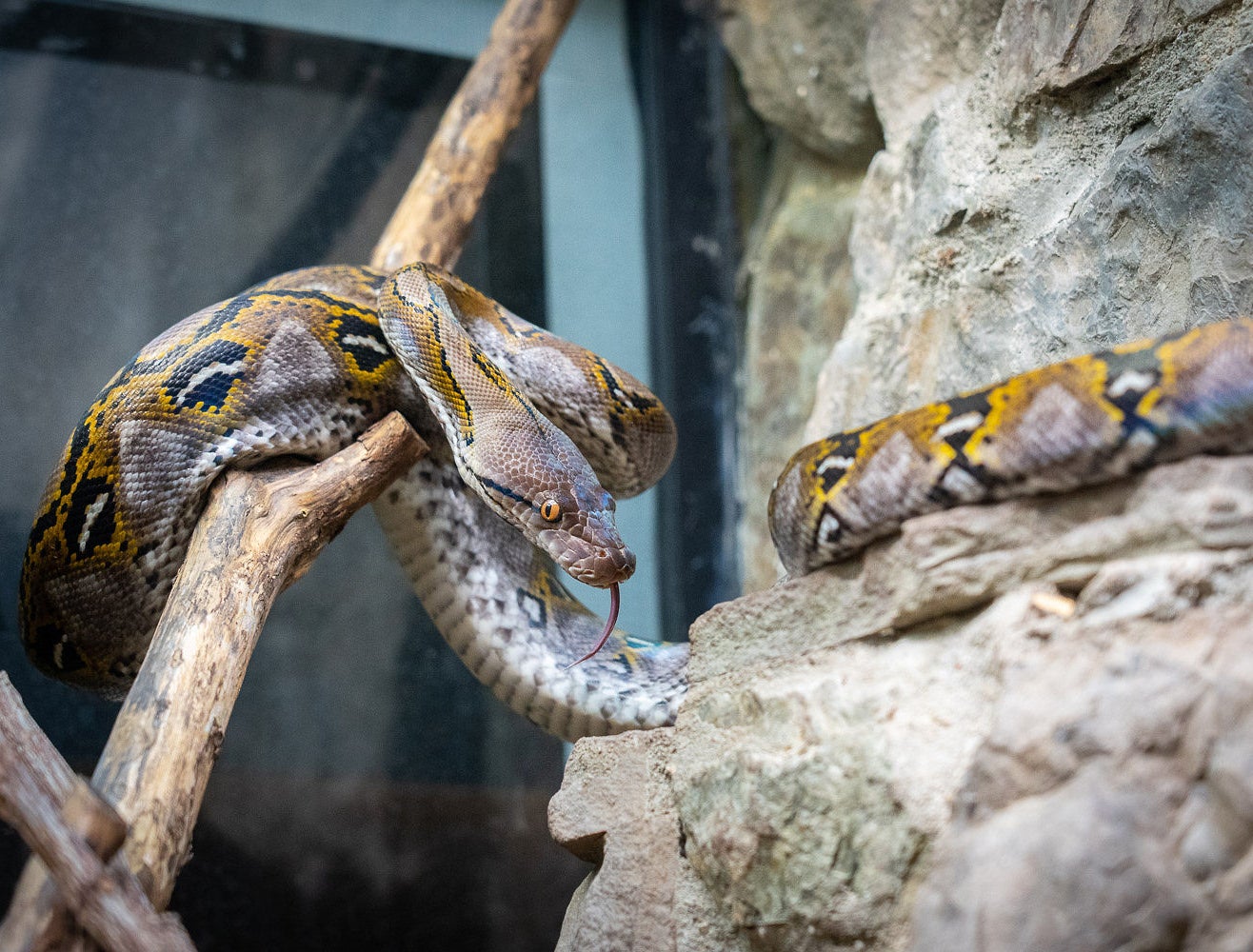
Let’s talk locomotion. How do snakes move?
Snakes move by shifting their scales in different configurations. In general, there are five types of snake locomotion: lateral undulation, sidewinding, concertina, rectilinear and some combination of those four movements. Although snakes move differently in the water than they do on land, they still flex the scales on their bellies to swim.
A lot of snakes—even those that do not live in trees—can be good climbers. Their technique is similar to planking: they hold their upper body out by anchoring a portion of their lower body and tail.
Last, “flying” snakes don’t actually fly. They’re just falling . . . with style!

If snakes are cold-blooded, how do they stay warm?
All snakes are ectothermic (commonly known as “cold-blooded”), which means they rely on the temperature of their surrounding environment to maintain their body temperature. To warm up, a snake may position part of its body in a sunny spot to soak in the rays. They are careful to conceal most of their body, though, since sitting out in the open can make them vulnerable to predators.
Some snakes—especially many python species—have the ability to produce heat endothermically. Pythons incubate their eggs by coiling around them. By contracting their muscles quickly (it looks like a twitch), they can raise and lower their own body temperature. The more they twitch, the more heat they generate. Python parents use the heat pits in their face to check the temperature of their eggs, like an internal thermometer, so they can determine whether to twitch more or less!
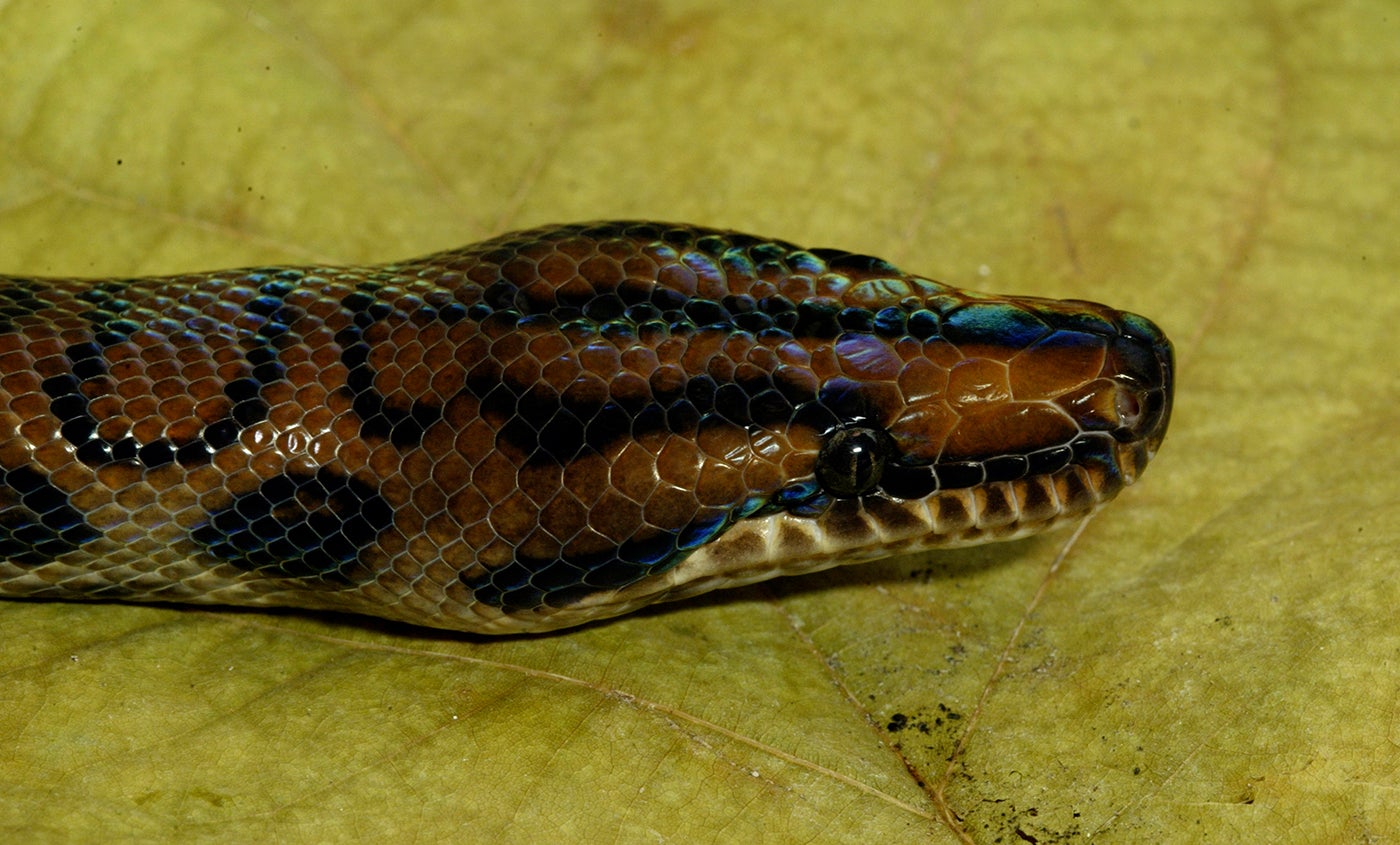
The Brazilian rainbow boa is named for its iridescent skin that refracts light and creates a rainbow-colored effect.
What is a common misconception about snakes?
Many people presume that snakes are aggressive. In my experience, however, they are more defensive than aggressive. If you encounter a snake, the best thing you can do is leave it be and give it space. As long as you don’t bother them, they won’t bother you.

In the United States, research on cobra venom has yielded pain relievers such as Cobroxin, used to block nerve transmission and Nyloxin, used for severe arthritis pain.
Why should we view snakes as friends, not foes?
Snakes are beautiful creatures—they come in all colors of the rainbow!
They are also intrinsically valuable in the natural world. When it comes to the food web, there are some snakes who are at the top of the chain; however, most fall somewhere in the middle. They prey upon animals—like rodents and insects—and birds, mammals and other reptiles prey upon them. If they weren’t around to eat those critters, we humans would see a lot more contamination in our food.
Last but not least, components of some snakes’ venom have been used to make medications that save our lives—including medications that treat cancer and control heart rate and blood pressure!
This story appears in the March 2022 issue of National Zoo News. Can’t get enough of cold-blooded creatures? Check out more noteworthy news about the Zoo’s reptiles and amphibians!
Related Species:
